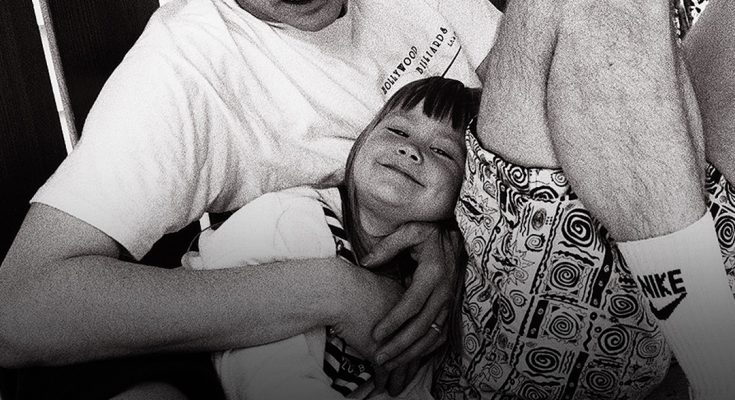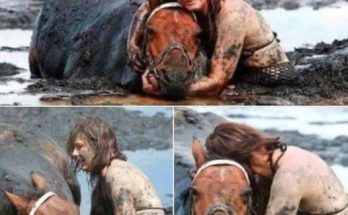His teenage years were spent moving from campgrounds to his sister’s lawn, even working nights as a janitor to help his family get by. Yet, amid the hardships, he discovered an escape — the stage, where his humor would lead him to unexpected success.
At age 12, his father lost his job, and with it, the stability they had counted on disappeared. Forced into a nomadic lifestyle, they moved from place to place, seeking shelter wherever they could find it.

The Hollywood actor hitch-hiking in Toronto, Canada, on December 4, 1981 | Source: Getty Images
By 15, he was working nights to help make ends meet. Though life was tough, he would later recall moments of unexpected happiness from those years. Unbeknownst to him, these experiences were quietly setting him on a path to a very different future.

The actor, circa 1985 | Source: Getty Images
A Childhood of Responsibility and Hardship
Before the family’s troubles began, his father had a stable job as an accountant, providing comfort for his family. He had even put aside his dream of becoming a saxophonist in a big band to ensure they had a steady income.
Then, when the star was 12, his father lost his job, turning their world upside down. Without a steady income or a place to call home, the family was forced to live in their car and move frequently. Despite the hardships, he would later remember these times fondly, describing them as “a much happier time.”

The actor at 19, pictured on December 4, 1981 | Source: Getty Images
We lived in campgrounds or we lived on my sister’s lawn way out in the country, and sure, it got cold in the tent, but in a weird way it was a much happier time,” he shared.
In his early teens, he took on the responsibility of helping support his family by working as a janitor. Not long after, his father found work at a tire factory, and he and his brothers joined their dad there, working eight-hour shifts after school as security guards and janitors.

The actor in his teens, seen on December 4, 1981 | Source: Getty Images
In an interview, he recalled the harsh conditions and having to carry a baseball bat for protection in a dangerous environment where “everybody had daggers and knives.”
The long hours took a toll, and his grades began to slip. By 10th grade, the former straight-A student was counting down the days until he could legally leave school. On his 16th birthday, he dropped out, a decision that deeply affected both him and his father.

The star attends an event in Pasadena, California in 1984 | Source: Getty Images
Though his dad was heartbroken, he didn’t try to stop him. At the same time, his father began introducing him to Toronto’s comedy clubs, where he got his first taste of a different kind of life.
By day, he continued his shifts at the factory; by night, he was at open mics, testing his comedic skills and hoping for a chance to break free from the life he knew. He understood that making others laugh was more than just a performance; it was his way of navigating the challenges around him.

Undated photo of the star | Source: Getty Images
Family Challenges and Personal Growth
Humor was his lifeline during a difficult childhood, especially as he tried to lift the spirits of those around him. His mother, who struggled with an addiction to painkillers, was often emotionally distant despite being physically present.
He explained that while his mother was “always there in the house,” her struggles left him feeling a sense of abandonment. From a young age, he had a knack for entertaining. By 9 or 10, he had mastered over 100 impersonations.

The actor impersonates Henry Fonda, circa 1992 | Source: Getty Images
He would go to exaggerated lengths to get a laugh, sometimes even throwing himself down the stairs to add to the spectacle. Though he initially did it for attention, he started using humor to bring some relief to his family.
His parents and three older siblings encouraged him and often called him out at family gatherings to perform. They saw his comedic talent as a rare bright spot in their lives. “My parents held my comedy up as something special — I was what was special about them in a way,” he recalled.

The actor pictured on December 4, 1981 | Source: Getty Images
Reflecting on his difficult teenage years, he emphasized that he didn’t see his story as a sad one. In a 2003 interview, he compared his journey to “a moth being born out of a cocoon.”
The challenges, he believed, had strengthened him and given him resilience. As he continued to pursue his budding passion, the stage became a place of possibility, guiding him from a life defined by hardship toward a future shaped by humor.

The actor poses for a portrait, circa 1992 | Source: Getty Images
Rising to Fame: Taking the Stage and the Screen by Storm
His first steps into comedy were modest but life-changing. As he frequented Toronto’s comedy clubs, performing at open mics while still working long shifts at a factory, he began to see his passion take shape.
Eventually, he took a chance on Los Angeles, hoping to break into television. His early days in L.A. saw him land a short-lived role on NBC’s “The Duck Factory,” a gig that didn’t make waves but kept him in the industry.

The actor poses during a portrait session, circa 1992 | Source: Getty Images
His big break came in 1990 on the Fox sketch comedy show “In Living Color.” With a cast that included Jamie Foxx and members of the Wayans family, he quickly became a standout with characters like Fire Marshall Bill, who often blew himself up for laughs.
The fan response was enormous, and his performances were unforgettable. This success on “In Living Color” gave him the exposure he needed, and he soon began working on his first major film project, “Ace Ventura: Pet Detective.”

The actor as Ace Ventura poses for a photo in December 1995 | Source: Getty Images
Breaking the Mold with “Ace Ventura”
Jim Carrey approached his role in “Ace Ventura” with one goal: to disrupt Hollywood’s leading man stereotype. Even though his “In Living Color” castmates laughed at the idea, with David Alan Grier poking fun at him on set, he pushed forward.

Jim Carrey attends “In Living Color” event, circa 1997 | Source: Getty Images
When “Ace Ventura” was set to release, Carrey was warned that Siskel and Ebert, the most influential film critics at the time, “violently hated it.” Despite the critics’ opinions, the film became a massive success, grossing over $100 million and making him an overnight sensation.

Jim Carrey during the “Ace Ventura: Pet Detective” premiere on January 25, 1994 | Source: Getty Images
With his newfound fame, his Hollywood career took off rapidly. He earned $450,000 for “The Mask,” but after “Ace Ventura’s” success, his rate skyrocketed to $7 million for “Dumb and Dumber.” As roles continued to pour in, he soon became Hollywood’s highest-paid actor and one of its most recognizable faces.

Jim Carrey poses for a portrait on October 24, 1994 | Source: Getty Images
Carrey’s rapid success made him a defining face of comedy in the ’90s. He became the first actor to command a $20 million paycheck. Yet, over time, Carrey chose to work less, opting to step back from the relentless pace of stardom. Hollywood continued to court him with substantial offers, but he began turning down projects.

Jim Carrey attends the 2nd Annual Blockbuster Entertainment Awards on March 6, 1996 | Source: Getty Images
He chose to focus on a slower, more thoughtful lifestyle outside of the spotlight instead. Then, after years of minimal screen presence, the role of Jeff Pickles in the Showtime series “Kidding” emerged.
When the series premiered, it offered Carrey a fresh platform and echoed themes from his life, exploring the weight of public expectations and the quest for authenticity.

Jim Carrey attends the Los Angeles premiere of “Sonic The Hedgehog 2” on April 5, 2022 | Source: Getty Images
In his 2003 interview, he admitted that he often marveled at the trajectory his life had taken. “I’m constantly pinching myself,” he shared, admitting that his success still felt surreal even after years in the industry.



